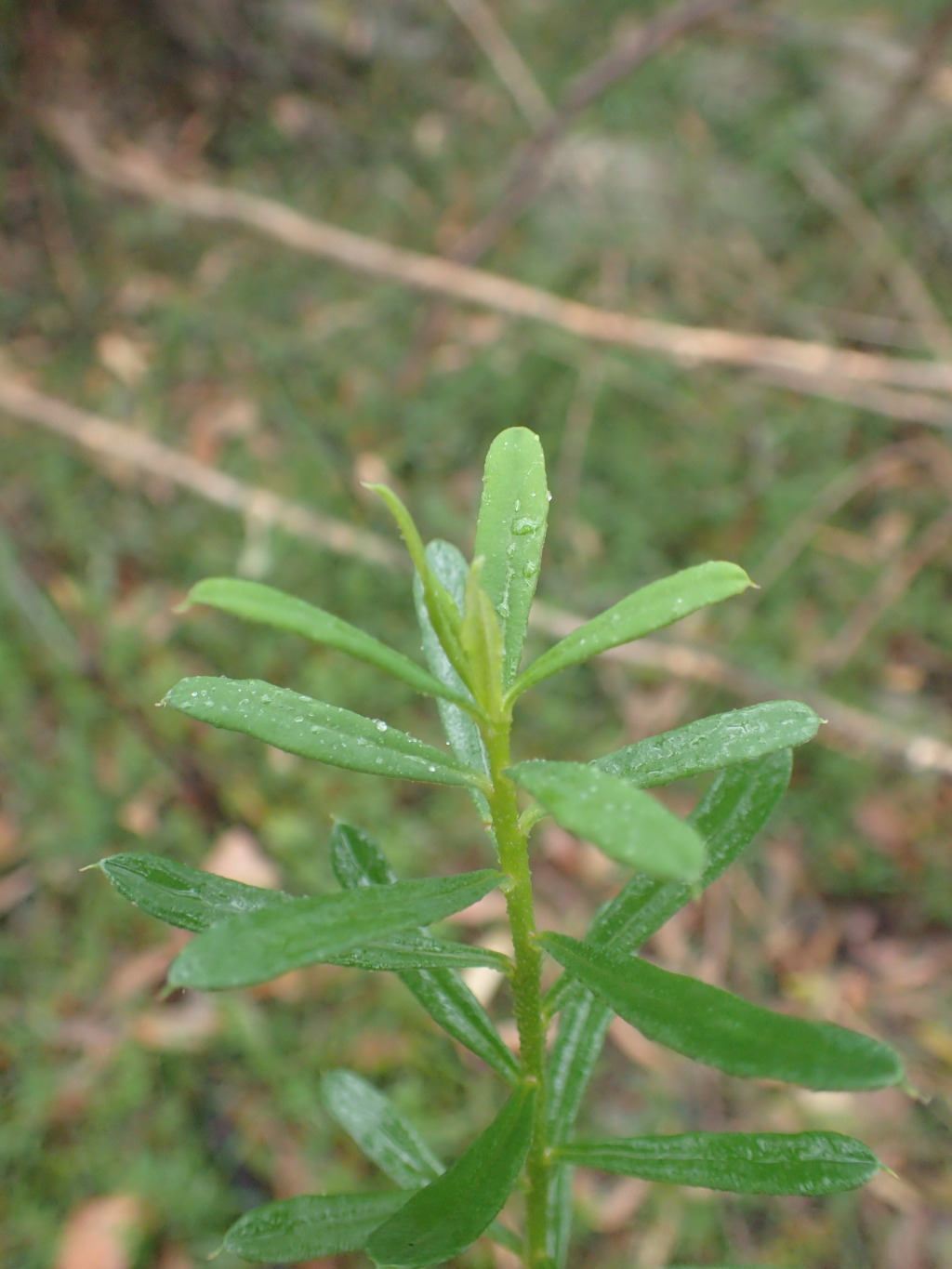Philotheca virgata
(Hook.f.) Paul G.WislonSlender shrub to c. 4 m high; branchlets glabrous, with many oil glands, lacking dark, stipule-like excrescences. Leaves obcuneate to elliptic or obovate, 10–20 mm long, 2–4 mm wide, shortly mucronate, thin-textured, slightly discolorous, dotted with many small oil glands, margins slightly recurved and glandular-crenate. Inflorescences axillary; pedicels solitary, without an obvious peduncle. Flowers 4(–5)-merous; sepals c. orbicular, c. 1 mm long; petals broad-elliptic, c. 5.5 mm long, white or pale pink, glabrous (but often papillose within), not persisting in fruit; anthers glandular beneath white apiculum; ovary glabrous, carpels free for most of their length. Follicles shortly beaked, c. 5 mm long; seed flattened-ellipsoid, c. 3 mm long. Flowers May–Dec.
EGU. Also NSW, Tas. Localized and rare in Victoria where known from Mt Kaye and near Buldah in the far east, growing in tall wet forest, amongst rock or on shallow rocky soil (also on Mt Imlay, near Eden in New South Wales).
Formerly considered endemic to Tasmania.
Bayly, M.J. (1999). Eriostemon. In: Walsh, N.G.; Entwisle, T.J., Flora of Victoria Vol. 4, Cornaceae to Asteraceae, pp. 178–183. Inkata Press, Melbourne.
 Spinning
Spinning

